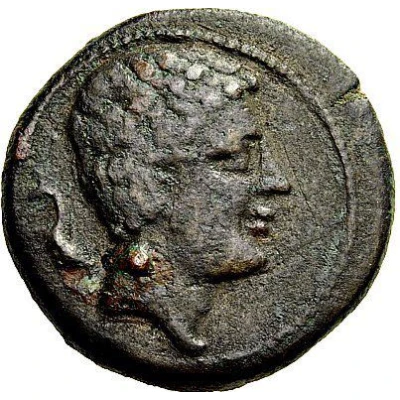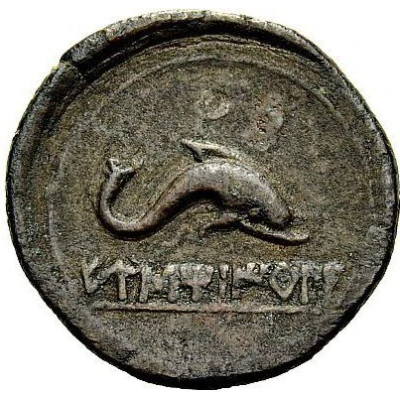


© Jesús Vico S.A.
Sextans 200 BC - 151 BC
| Bronze | 4.3 g | 18 mm |
| Issuer | Eustibaikula (Ausetani people) |
|---|---|
| Type | Standard circulation coin |
| Years | 200 BC - 151 BC |
| Value | 1 Sextans (⅙) |
| Currency | As (first half of the 2nd century BC) |
| Composition | Bronze |
| Weight | 4.3 g |
| Diameter | 18 mm |
| Shape | Round (irregular) |
| Technique | Hammered |
| Demonetized | Yes |
| Updated | 2024-10-10 |
| Numista | N#307598 |
|---|---|
| Rarity index | 97% |
Reverse
Dolphin facing right. "EUSTiBaIKuLA" in northeastern Iberian script below.
Script: Iberian (Levantine)
Comment
Reverse inscription:"EUSTiBaIKuLA" written from left to right in non-dual northeastern Iberian script.
Four pieces known according to 1310, page 234.
Interesting fact
One interesting fact about the Sextans coin from Eustibaikula is that it features a unique blend of ancient Egyptian and Roman influences in its design. The obverse side of the coin depicts a stylized bust of a pharaoh, while the reverse side features a image of a Roman goddess, highlighting the cultural exchange and fusion that occurred during the period of Roman rule in Egypt.